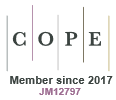Just Accepted
This article has been peer reviewed and accepted for publication. It is in production and has not been edited, so may differ from the final published form.
Mapping Fire Hazard Potential in Kazakhstan: A Machine Learning and Remote Sensing Perspective
Abstract
Background. Wildfires pose significant environmental challenges in Kazakhstan, exacerbated by climate change and human activities. With vast landscapes ranging from grasslands to dense forests, the country is highly vulnerable to wildfires, yet lacks comprehensive predictive tools for fire risk assessment. Aims. This study aims to develop a wildfire hazard map for Kazakhstan using the Maximum Entropy (MaxEnt) model, integrating diverse environmental variables processed via Google Earth Engine. Methods. The MaxEnt model was applied using historical fire occurrence data from MODIS and VIIRS, combined with environmental predictors like climate, topography, and vegetation. Key predictors were statistically analyzed for relevance, ensuring the model's robustness. The output was validated using independent fire data. Key Results. The model achieved an Area Under the Curve score of 0.79, with an accuracy of 72% and recall of 71%. The resulting map delineates fire risk zones, identifying high-risk areas predominantly in forested and steppe regions. Conclusions. The study highlights the efficacy of the MaxEnt model in wildfire risk prediction, underscoring its potential for application in other regions. Implications. The map provides critical insights for resource allocation, fire management strategies, and policymaking. Continuous model refinement and integration of real-time data are recommended to enhance predictive accuracy and adaptability.
WF24232 Accepted 22 July 2025
© CSIRO 2025



